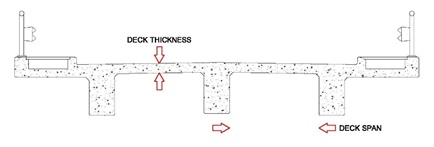In accordance with VDAM Rule 2016, from 1 December 2018, ‘As of Right’ access will be made available to heavier bus axles, increasing from the current 8.2 tonne limit to 9 tonnes on twin-tyred single axle buses. It is important to note that this right of access will be limited to designated urban transport routes identified within Regional Council district plans – therefore the change will only apply to a limited number of bridges. It is also anticipated axle weight limits of 10 tonnes will be established with the next VDAM rules to align with most modern buses.
The vast majority of bridges built to New Zealand design codes post-1933 are expected to be able to carry 9 tonne and 10 tonne axles.
Buses seeking to operate axles heavier than 9 tonnes under the current VDAM rules may apply to travel on routes. However, these will require an approved ‘Specialist Vehicle Permit’ from the relevant Road Controlling Authority, with the maximum axle limits being specified within Table 3.6 of VDAM Rule 2016 (i.e. single axle with twin tyres up to 12 tonnes, and two axles in a tandem set with twin tyres up to 18 tonnes).
Based upon the forthcoming changes to the VDAM Rule 2016, Road Controlling Authorities need to review their bridges on scheduled bus routes in order to identify any potential or perceived structural issues, with particular regard being paid to the condition of bridge decks. The review is also likely to consider other associated implications, including the potential increased effect on pavement wear along these routes.
To assist with this process, guidance maps and detailed spreadsheets have been generated to identify where designated bus routes operate. Additionally, known bridges on these routes have been highlighted on the maps. These will help in identifying those structures affected by the VDAM Amendment. As the maps are based upon available Road Assessment and Maintenance Management (RAMM) data, Road Controlling Authorities must undertake their own check to confirm that all bus routes and all bridges have been captured.
As the vast majority of bus routes will already be established, and bridges on these routes will therefore be subject to regular bus loading, Road Controlling Authorities are likely to be aware of any particular structural issues on these bridge decks. For the purposes of an internal review by a Road Controlling Authority, the following parameters can be used as a risk-based guide to determine if a bridge has the potential to be affected by these heavier bus axles:
A more detailed specific assessment should be carried out for any bridge with the following:

If NZ Transport Agency funding assistance is required for initial screening, the following information needs be provided by 30 July 2018, with a, b, c, d entered into the supplied spreadsheets:
a) Bridge identifier.
b) The year of construction of the bridge.
c) Design loading if known.
d) Details of the construction material type e.g. reinforced concrete deck.
e) Any available as-built drawings for the bridge (in particular structural details of the bridge superstructure).
f) Details of the existing condition of the bridge, specifically any particular structural concerns that have prompted a request for a review (including photographs where possible, and the latest General & Principal Inspections).
As noted above, the new VDAM Amendment comes into force on 1 December 2018. In order to ensure that all affected bridges can be considered prior to this date, we would appreciate your response/screening prior to 28 September 2018.
If you have any questions, please contact Liam Coleman Principal Structures Engineer by email at liam.coleman@nzta.govt.nz
You also can download a print version. [PDF, 503 KB]